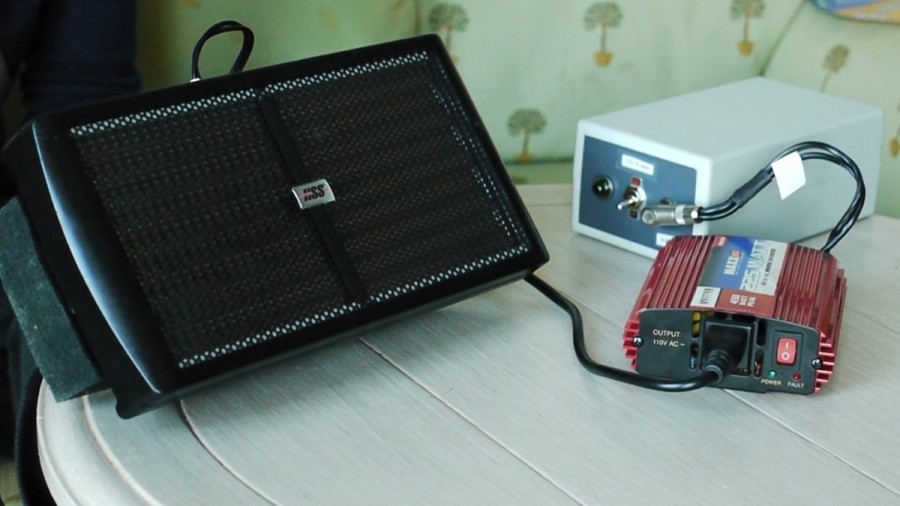Manipulative … that is a word that others have used to describe Interpelled. This link was passed on to me by a fellow subversive and good friend. The video is about contextual hacking. While Johannes Grenzfurthner’s examples are not specifically related to sound — they are to sense. Truly subversive art addresses societal controls and stop signs that exist in our heads. What he said resonated with me – especially in the wake of some of the fearful reactions I encountered with my own work.
In January, I presented Interpelled and received a lot of mixed reactions. Confusion, fear of physical harm, and the idea that I was trying to control people’s minds spread quickly across the room. I had opted to use the presentation time in a more experimental way and so I think some of the reactions I received were due to the unknown technology, the nature of the project (conceptual sound intervention), and group dynamics, but I was still quite surprised by the reactions. The most charged responses came from those who seemed troubled or fearful of the technology and/or by the idea that I wanted to create work that functioned like a conscience might. Some accused me of wanting to control people while others expressed they were disturbed by the activist context I was going to be using it in. Many present felt that the nature of projected sound took away people’s choice- – while a few others chimed in support of the project’s intention and execution. My ethics and aesthetics were brought into question. Obviously, conversations like these weren’t sparked by my colleagues choice of medium or technology such as drawing or video. It felt like I started a wildfire. What was noteworthy was that despite my description of how the project was experienced at COP16, people in the room remained either fearful or confused by the work. The mere description of the project seemed to cause a form of conceptual hearing in itself. Some claimed I was trying to tell people what to think and even when I corrected them, they seemed unable to get it out of their head. Which led me to the question, how is what I’m doing different from those who use signage to get a message across? But more to the point, why the wildly different reaction to sound as the medium as opposed to an image?
With hindsight, I believe my colleagues and the faculty understood the difference between message and voice, but could not articulate it at the time. My tactic did more than convey a message as a sign would, it presented itself as a voice and a way to create space. Whether using this tactic is, as they were concerned, unethical or manipulative is still up for debate, but has not been true in my experience.

poetic intervention, artistic investigation, phenomenological research
The truth is, I had absolutely no interest in telling people what to do at COP16. Sure, I would love for the US to recognize their responsibility and do something concrete about it– I would like to see many things change in this world. But when something doesn’t work it’s time to get creative and approach the problem from another angle. Shouting chants or hanging oversized banners for delegates to (maybe) read is not effective activism anymore. Rhetoric and clever signage at political events was once innovative, but is now commonplace, easy to ignore, and arguably ineffective. Direct action has always succeeded when it plays on the unexpected to achieve results. Effective activism today requires innovation, new strategies and tactics, and experimentation. Effective art plays with expectation, interrupts, and challenges the way we think. And art at its best speaks to the soul and inspires reflection. Interpelled aimed for all of that at COP16 by venturing to expand ‘reality’ through the creative use of sound and gesture.
This prompted me to explore the idea of fear and sound – both as a research data point but also since I felt I needed a way to understand these reactions on a deeper level if I was going to be able to shift the dialogue to a more constructive place.
Working creatively with a technology that most people don’t know exists but that inherently plays with people’s expectations and perceptual reality is not easy. Often I found when I explained the project it took people some time to imagine positive possibilities of any technology originating from the military.
Reactions to using an HSS device at COP16 varied greatly. When I told colleagues of the project, responses ranged from a delighted sort of wonder to a deeply disturbed confusion – and I understand there are many complex reasons for that. When I was trying to illicit help and initially get organizational support for the project responses were also mixed and often polarized. Some questioned my ethics and others were excited and asked to be kept in the loop as to the outcome of the action. Most common were people who viewed this use of sound as “intense.” Artists, activists, and environmentally concerned citizens most easily realized the potential of using this device in a way that was poetic yet political. Sometimes those who understood my intentions still felt uncomfortable with some aspect of the work. Working on this project I began to realize that it brought up skepticism and fear. Fear especially is a hard thing for people to acknowledge let alone talk comfortably about.
Leave a Reply